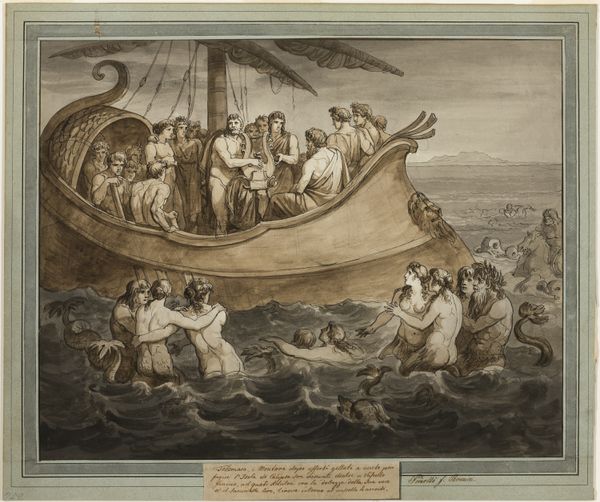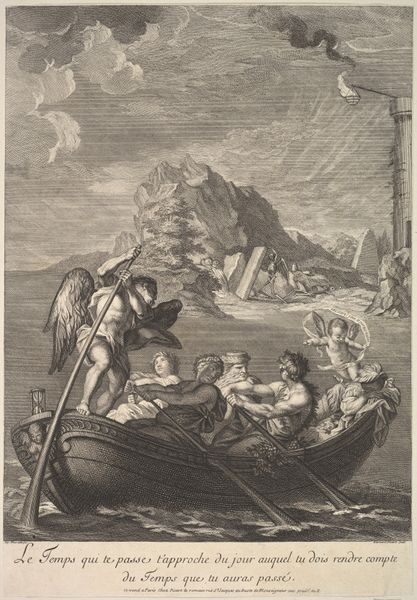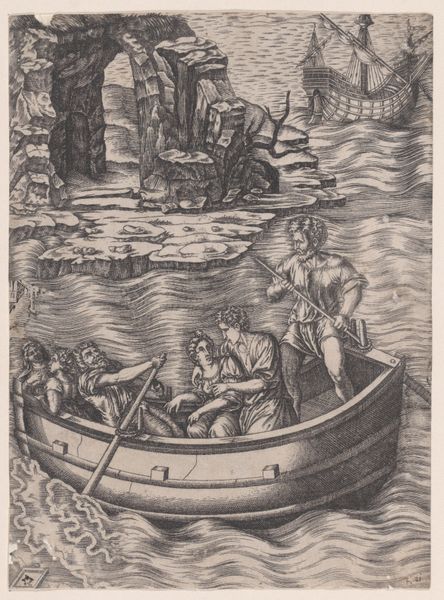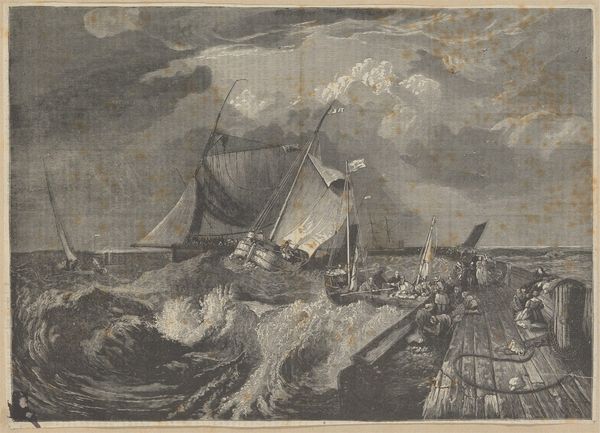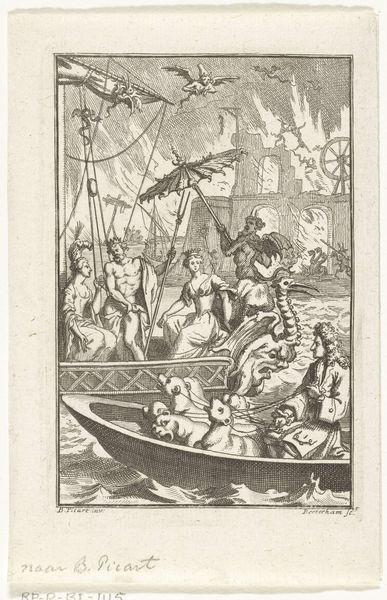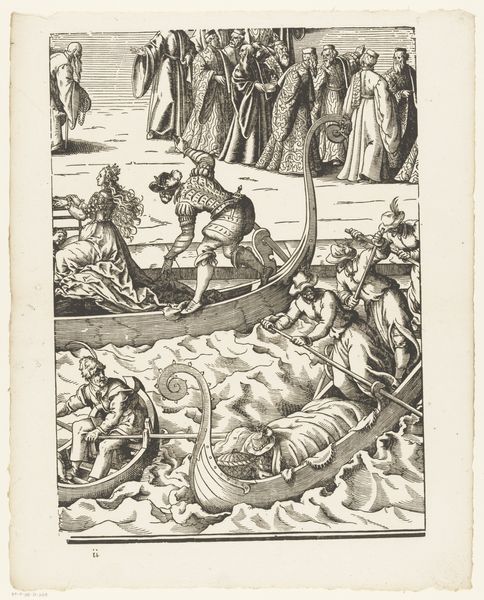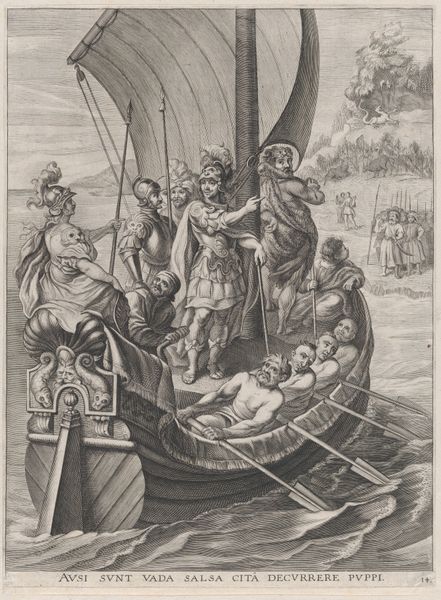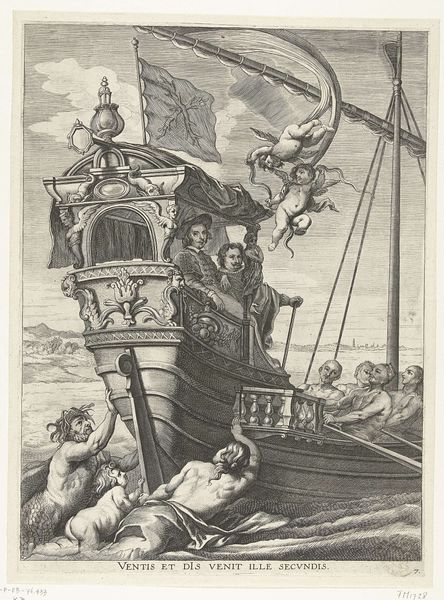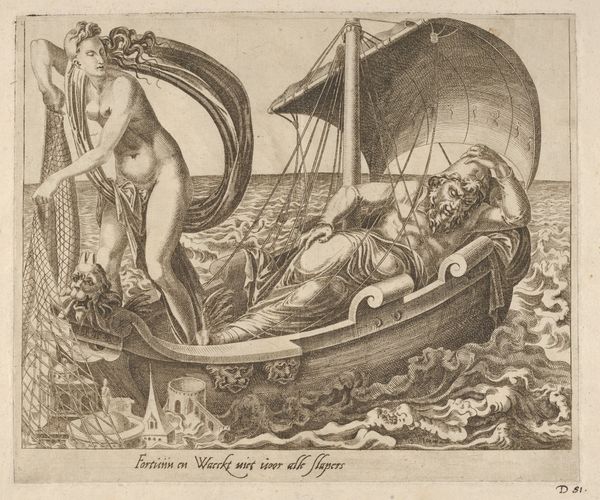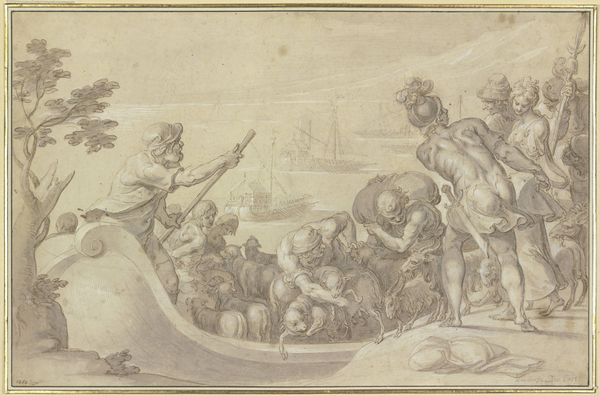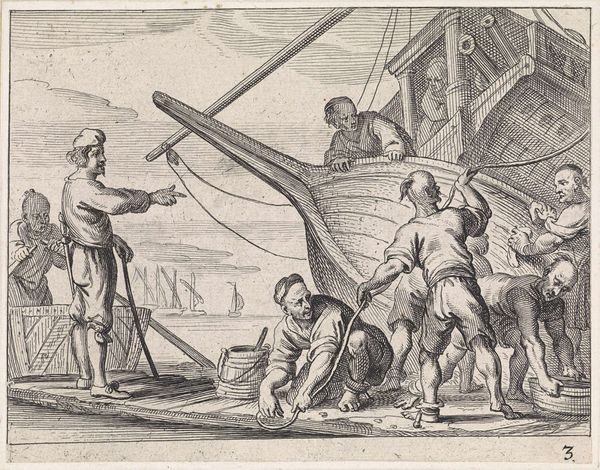
print, etching
#
narrative-art
#
baroque
# print
#
etching
#
landscape
#
figuration
#
line
#
history-painting
Dimensions: plate: 10.7 x 15.7 cm (4 3/16 x 6 3/16 in.) sheet: 10.7 x 17 cm (4 3/16 x 6 11/16 in.)
Copyright: National Gallery of Art: CC0 1.0
Editor: Here we have Willem Basse's etching from 1634, "Caesar Crossing Stormy Seas". The choppy lines create a dramatic feel – what do you make of the stark contrast and the story being told? Curator: It is an interesting display of printmaking technology in the 17th century. Notice how the line work doesn't just depict the scene, but is inherently *part* of its production. Consider the labour: the craftsman carefully etching each line, mirroring but never quite equaling mass reproduction of imagery and power, how is the role of the engraver, or printer presented in Dutch society? Editor: So, it’s not just about illustrating Caesar, but also about highlighting the engraver's role and technique? Curator: Precisely! Think of it as materializing a narrative. The paper itself, the ink, the press... they all play an active part in translating history. Who owned this print, and how was its message shaped by their consumption of it? Was it aimed to serve the purpose to teach or decorate a space. And the artist themselves, how did the political context contribute to art production, how has their contribution shaped historical knowledge? Editor: It almost elevates the craft, beyond just a means to an end. Curator: Indeed. The materials and method become integral to interpreting the image itself and the surrounding socio-economics of print consumption in that era. Editor: This gives me so much to think about – seeing the process as meaning, and the relationship with society. Curator: Exactly, by recognizing the material circumstances, we uncover so much more about its role in shaping history.
Comments
No comments
Be the first to comment and join the conversation on the ultimate creative platform.

